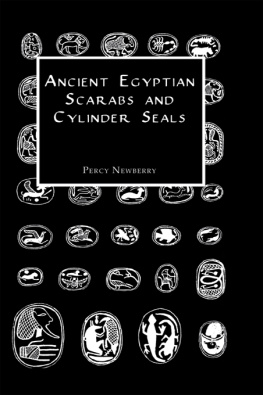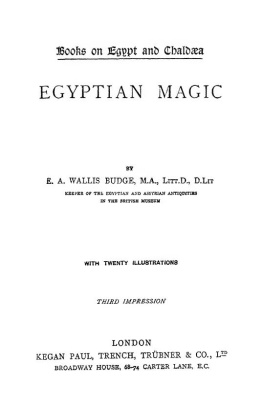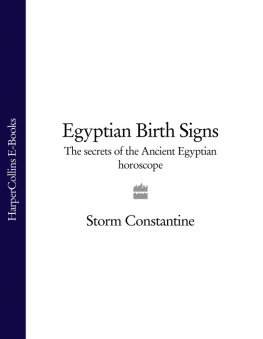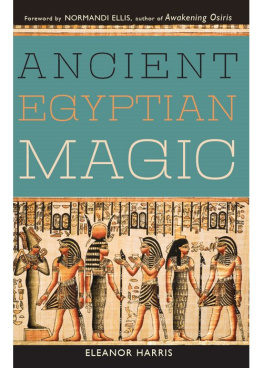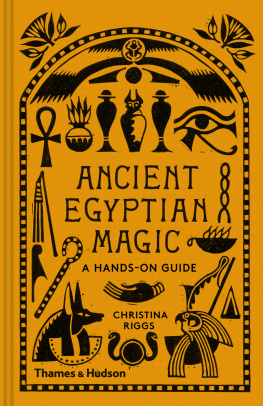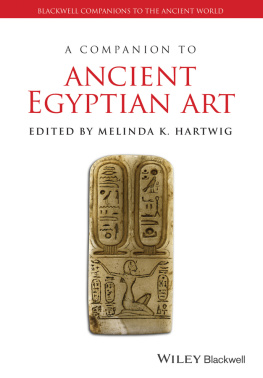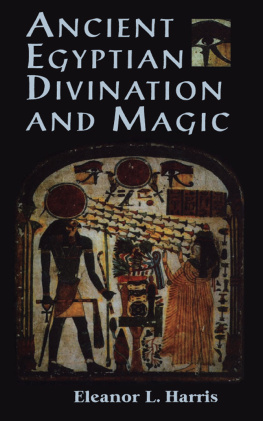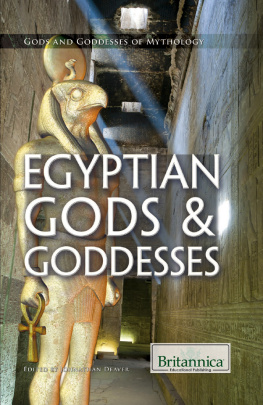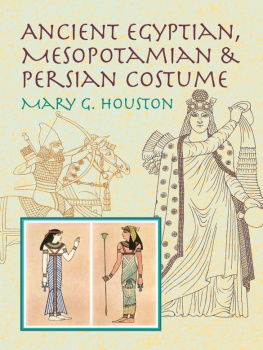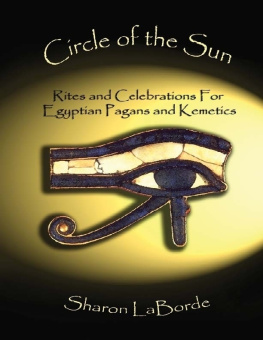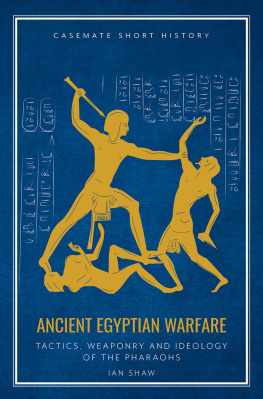ANCIENT EGYPTIAN SCARABS AND CYLINDER SEALS
The seals collected by Captain Timins of Cairo are here catalogued, reproduced and described by Professor Newberry to make an attractive and useful book. The original collector chose the pieces on the basis of historic, as well as artistic merit. The provenance of the seals is mostly from the Eastern Delta and Upper Egypt.
Percy E. Newberry was sometime professor of Egyptology at the University of Liverpool and the author of several works on that subject.
ANCIENT EGYPTIAN SCARABS AND CYLINDER SEALS
THE TIMINS COLLECTION
Percy Newberry
First published in 2003 by
Kegan Paul International
This edition first published in 2011 by
Routledge
2 Park Square, Milton Park, Abingdon, Oxon, OX14 4RN
Simultaneously published in the USA and Canada
by Routledge
711 Third Avenue, New York, NY 10017
Routledge is an imprint of the Taylor & Francis Group, an informa business
Kegan Paul, 2003
All rights reserved. No part of this book may be reprinted or reproduced or utilised in any form or by any electronic, mechanical, or other means, now known or hereafter invented, including photocopying and recording, or in any information storage or retrieval system, without permission in writing from the publishers.
British Library Cataloguing in Publication Data
A catalogue record for this book is available from the British Library
ISBN 10: 0-7103-0944-9 (hbk)
ISBN 13: 978-0-7103-0944-0 (hbk)
Publishers Note
The publisher has gone to great lengths to ensure the quality of this reprint but points out that some imperfections in the original copies may be apparent. The publisher has made every effort to contact original copyright holders and would welcome correspondence from those they have been unable to trace.
Introductory Note.
T HE Collection of Scarab-shaped seals belonging to Captain Timins, of Cairo, number about five hundred and eighty specimens. They have for the most part been bought in Cairo itself, but their provenance is mainly the Eastern Delta and Upper Egypt. In forming the collection Captain Timins has always kept in view the historic, as well as the artistic, side of this glyptic art. Many specimens are the finest examples of glazed steatite known, and from an historical point of view several specimens are unique.
The most ancient objects in the Collection are, of course, the Cylinder-shaped seals. Of these there are four (, No. 21).
The Button and Stamp-shaped seals are important ; they date from the end of the Old Kingdom to the rise of the Middle Kingdom (about B.C. 2500-2000). Three examples are unique. No. 20 () is of the Twelfth or Thirteenth Dynasty.
Of the Pyramid-building Kings there are several Scarab-shaped seals (, Nos. 29-34), but none of these can be considered contemporary with the Kings whose names they bear. The example of Khufu (No. 29) is certainly of the Eighteenth Dynasty, and the other five may be later still.
Royal scarabs of the Twelfth Dynasty are always rare, but there are five in this Collection, including a beautiful specimen ( (Nos. 89 and 91) date only from the Twenty-fourth Dynasty.
The Thirteenth Dynasty is represented by Kha-nefer-ra Sebekhetep (, No. 50) is only otherwise known from three cylinder seals, and may belong to this period.
Of the Hyksos Kings there are several very interesting specimens. Six are of Shesha (, Nos. 64-67).
A unique specimen bearing the name of a Prince Antef (, No. 90) probably also belongs to this period.
The Eighteenth Dynasty is represented by scarabs , Nos. 11 and 12).
Of the Twentieth Dynasty, there are three examples of Rameses III (, No. 12) is a splendid specimen of glyptic art and glazing, the back, in low relief, representing the King slaying a lion with human-head portraying a bearded Syrian.
The Twenty-first Dynasty is represented by a single specimen of Men-kheper-ras Queen, Ast-em-kheb (, No. 20), an exceedingly rare scarab, only one other being known of this Queen.
Of the Twenty-second Dynasty there are two specimens of Sheshank I (, Nos. 15 and 24), which are probably of the same date.
Of the later Kings there are two of Nekau (, No. 11), one of which is cut in hmatite.
The series of Scarab-shaped seals of officials of the 12th to 18th Dynasties is important. The specimens figured in , No. 4).
Of the Eighteenth Dynasty there is a scarab of a scribe () is of a Priest of Amen of the same period.
The remaining Scarab-shaped seals may be divided into various groups. Some of them name Deities (, 2 ; the desert hare in No. 15 and the gazelle in No. 17.
At least seventy specimens in this Collection bear simple decorative devices ( is unsurpassed, if not unequalled, by any other ancient scarab that I have seen.
In the descriptions of the Plates I have confined myself to giving a brief description of the base of each specimen, together with notes of the material, colour of the glaze and approximate date. All the drawings of the specimens I have made myself, and they are reproduced full-size.
PLATE I.
1. Cylinder seal bearing the personal name AN and the sign Neith. Black Steatite. Pre-dynastic Period to Second Dynasty.
2. Cylinder seal bearing the personal name PE-HE-KA. Black Steatite. Pre-dynastic Period to Second Dynasty.
3. Cylinder seal bearing the personal name SHESH and the title hen Neith, Priest of Neith. Black Steatite. Pre-dynastic Period to Second Dynasty.
4. Cylinder seal bearing the personal name ANU. Green Steatite. Pre-dynastic Period to Second Dynasty.
5. Cylinder seal bearing the name of KHA-EF-RA and the legend beloved of the Gods. Hard brown stone. 4th Dynasty.
6. Cylinder seal bearing the name of NEFER-AR-KA-RA, the Good God, Priest of Hather, beloved of the Gods. Black Steatite. 5th Dynasty.
7. Cylinder seal bearing the name of SEN-USRET. Pale blue-green glazed Steatite. 12th Dynasty.
8. Cylinder seal bearing the prenomen and nomen of AMENEMHAT II. Brown-green glazed Steatite. 12th Dynasty.
9. Cylinder seal bearing the prenomen of AMENEMHAT II and the name of a Royal Daughter, who is joined to the Beautiful White Crown, NEB-EN. Blue-green glazed Steatite. 12th Dynasty.
10. Cylinder seal bearing the prenomen of SEN-USRET III. Green glazed Steatite. 12th Dynasty.
11. Cylinder seal bearing the prenomen of AMENEMHAT III, beloved of Khenty-khety. Green glazed Steatite. 12th Dynasty.
12. Cylinder seal bearing the prenomen of AMENEMHAT III. Blue glazed Steatite with stains of metal mounting at both ends. 12th Dynasty.
13. Cylinder seal bearing the Golden Horus title of an unknown King. The title reads :SE-KHA-EN-PTAH. Blue glazed Steatite. 12th Dynasty.
14. Cylinder seal bearing the name of the Good God, SEKHEM-KHU-TAUI-RA, beloved of Sebek, Lord of Sunu. Green glazed Steatite. 13th Dynasty.
15. Cylinder seal with incised cross lines. Green glazed Steatite. 18th Dynasty.
Cylinder Seals. Ist - XIIIth Dynasties.
PLATE II.
16. Cylinder seal with coil pattern and columns of hieroglyphic signs. Green glazed Steatite. Hyksos Period.
17. Cylinder seal with figures of men, a bird, and hieroglyphic signs. Black Steatite. Hyksos Period.



